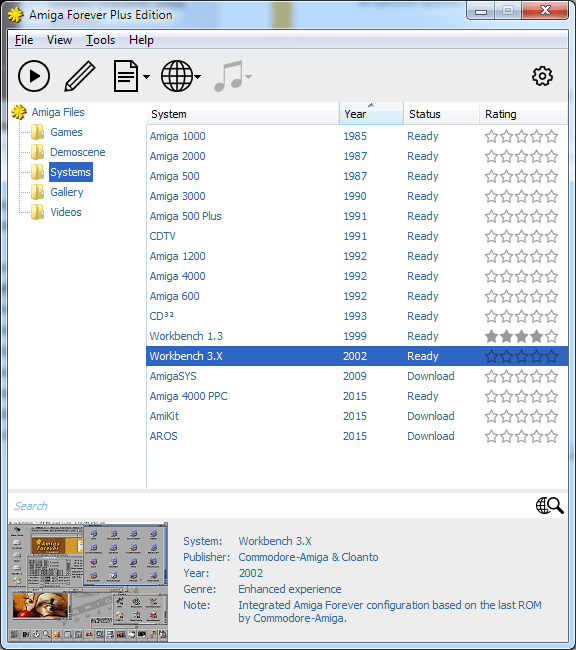


The Amiga hardware, many Amiga programs assume the custom chips will be present.
#Mac emulator for amiga full
I had originally hoped to let the 68k have full access to the memory, but instead I have to limit it to a 4gig single allocation.Ĥ. This is the biggest issue as it means all memory access must be mapped. this is something which I didn't originally think about, but the Host Operating system uses a 64bit address space, and Amiga Apps are stuck in a 32bit space. Amiga Games WHDLoad Packs: WHDLoad is a way to run Amiga games from hard disk.
#Mac emulator for amiga download
I solved this by building a set of classes which map over the Amiga operating system data structures and handle the endian issues.ģ. Download WinRAR Recommended Emulator(s) Emulator Windows Macintosh Linux. all data structures on the Amiga are big endian, so all multibyte memory access needs to be byte swapped when the host operating needs to manipulate them. The 68k CPU, not to much of a problem, but obviously requires an emulator (which reduces the performance).Ģ. This approach is hampered by four things:ġ. Essentially how Wine works when running Windows Instead of simply emulating the whole Amiga architecture, I trap application calls to Exec, Dos (and other hardware hitting libraries, devices, and resources) then handling them with the host operating system. So why not point it at an Amiga executable and see what it doesĪs explained, I am trying a different approach to Amiga Emulation. It doesn't really do much at the moment, so I've included a 68000 disassembler, so you can watch the instructions execute. The rest of the ram isn't available to my exec emulation and currently does nothing. The emulator allocates 16Meg of ram, of which the lower 2Mb is treated as Chip Ram, and the next 8Meg is treated as Fast Ram. Other libraries are just Stubbs right now, which do little except report which function has been called.
#Mac emulator for amiga mac
The minimal DOS library currently just access the Mac file system, and is only able to loadSeg executables into memory, and then CreateProc them into the multitasking system. I decided to build this separately from ADFBench for now, so I can et it working properly before I reintegrate back in.Īllows task to send and receive signals, but the message passing system is not really working yet. Well, after quite a bit of effort, I have a working alpha of the emulation engine running. As promised here is an early alpha of my new amiga emulator.įor those of you who have used my ADFBench, you will be aware that I set about trying to get my ADF browser to actually run the amiga executables it can read on ADF files.


 0 kommentar(er)
0 kommentar(er)
